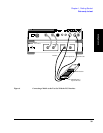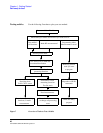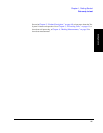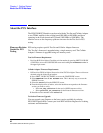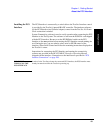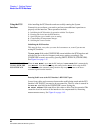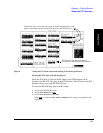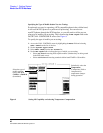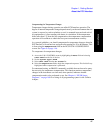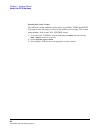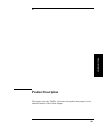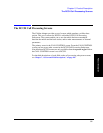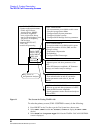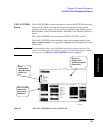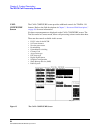
47
Chapter 1, Getting Started
About the PCS Interface
Getting Started
Compensating for Temperature Changes
Temperature changes during operation can affect PCS Interface operation. The
degree of internal temperature change depends mostly on the environment the test
system is exposed to; such as whether or not it is mounted in an enclosed rack of
test equipment or is free-standing with better air circulation. If the temperature
drifts more than 1
°C from the last compensation, the temperature compensation
operation will recalibrate to obtain the best power measurement accuracy.
As a general guideline, you should compensate for temperature changes when the
PCS Interface is first turned on, and again after running for 30 to 60 minutes. This
is done using the
Temperature field on the DCCH CALL CONFIGURE II
screen. See Figure 9 on page 1 46.
To compensate for temperature changes:
1. Access the CALL CONTROL screen by highlighting the
More
field and selecting
CALL CNTL
from the list of choices.
2. Set the
System Type
to
DCCH
.
3. Select
CALL CFG2
from the
To Screen
list.
4. Select the
Temperature
field to begin the compensation process. This field will stay
highlighted while compensation is performed.
For automated testing, an IBASIC command is available that can be used to query
the necessity for temperature compensation. This function monitors temperature
changes in the instrument over time and, when queried, indicates whether
compensation needs to be performed or not. See Chapter 6, “HP-IB Syntax
Diagrams,” on page 169 for a listing of all programming syntax for the Cellular
Adapter.



